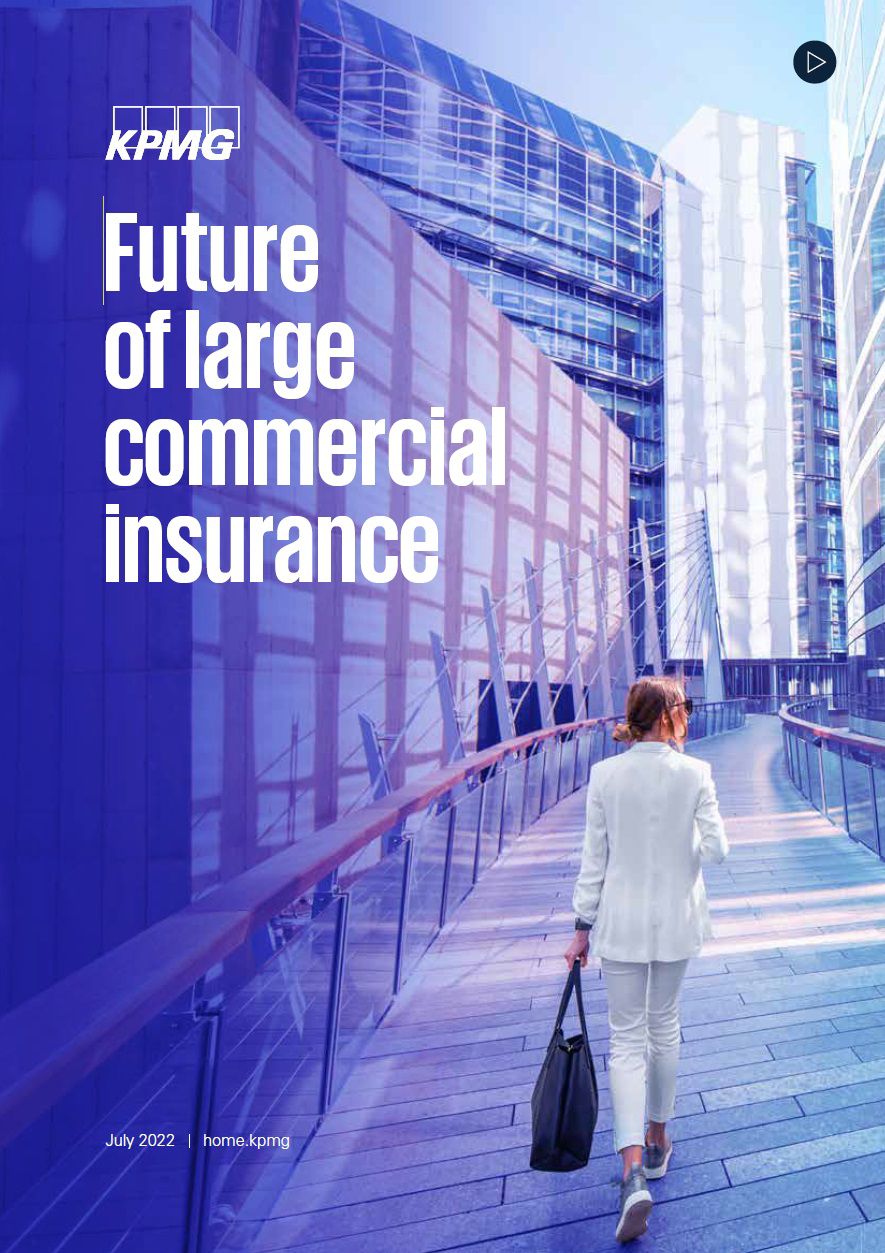Despite strong market performance, traditional commercial insurance business models are coming under pressure from swirling changes that now have the sector on the cusp of a sweeping transformation.
To survive and thrive in this new environment, commercial insurers shouldn’t stand still. They need to evolve and build new, differentiated capabilities that connect across their organisations.
Technology will be critical. But digital transformation goes well beyond technology.
Insurers need a clear client-led business design of their end-to-end processes, driven by deep client, broker and market insights. It should be underpinned by a digitally enabled technology architecture and empowered workforce. Only by taking this “connected” approach might insurers achieve true value from their digital transformations.
In our latest report, KPMG spoke with more than 400 decision-makers from commercial insurance organisations globally to better understand evolving trends and their impacts on the future of the sector. With these findings, we share what we believe will be the three winning business models of the future.
Signals of change
The traditional insurance business model continues to function. The market remains buoyant. Yet, strong swirling changes from internal and external factors are poised to transform the sector as we know it. What are these signals of change?
The commercial insurance industry is under rising pressure from five influences. KPMG International’s Global Head of Insurance Laura Hay takes us through them.
Clients and brokers expect a cutting-edge experience — every bit as sophisticated and customised as they are used to in their personal lives. Meanwhile, the rise of insurtechs in the commercial space is starting to add competitive pressures focused on client pain points. Together, they are forcing commercial insurers to rethink their operating models, business models and channels.
Uncertainty abounds, with the long-term view of recovery from COVID-19 remaining unclear. Add to that the crisis in Ukraine which has unleashed an unprecedented range of business impacts, as well as rising inflation and interest rate hikes. Navigating these uncertainties will require commercial insurers to be able to dynamically adjust their strategy.
The world order is changing, catalysing a shift towards more assertive national regulation in some markets. Combined with ongoing concerns about business and supply chain resiliency, many commercial insurance players are starting to find the regulatory landscape more fractured and complicated than ever before. Getting ahead will require a more holistic view of the shifting regulatory terrain.
New technologies are permeating the insurance industry, providing commercial insurers with a range of new opportunities to help meet expectations, drive efficiency and encourage innovation. Industrial automation, robotics and artificial intelligence are enabling insurers to streamline processes, and place digital and data at the core of their operating models to drive smarter business decisions.
ESG factors aren’t just impacting the risk landscape for commercial insurers. They are also influencing the scrutiny insurers face from key stakeholders, including regulators, investors, employees, clients and the general public. While ESG may sometimes feel like a distraction from the core business, the reality is that it is critical both to stakeholders and future growth.
Business models of the future
As signals of change continue to disrupt the sector, businesses can expect to see rapid evolution in markets and models. Three business models look set to dominate the commercial insurance industry of the future.
01
The agile global player
These are established players — often large international insurers covering multiple countries, business lines and segments — who focus on harnessing a wide range of new technologies, adapting to the changing economic and social landscape, and reducing the “tower of legacy” on which current products rely.
02
The innovative specialist
These are nimble and dynamic organisations with the ambition and capability to rapidly embrace new and emerging risks. They develop new products and supporting operating models that harness the power of technology and data to help scale rapidly and respond aggressively to new opportunities in the market.
03
The open-source risk manager
These players recognise that the global insurance market is complicated and competitive. They offer clients simplicity, efficiency and integration, bringing together disparate "part solutions" to carve out a powerful position in the market.
KPMG Connected Enterprise
Approaching change means adapting to a connected operating model. The KPMG Connected Enterprise approach is designed to help large commercial insurance companies assess their existing capabilities, identify capability gaps, and manage the transformation hurdles across the organisation to design and embrace future business models.
8 capabilities, 2x as likely to succeed
The 8 capabilities of KPMG Connected Enterprise deliver tools, methods and frameworks to achieve a new, better business-as-usual with agility and accelerated innovation.
These capabilities help retail businesses define a customer-centric approach to digital transformation that connects the front, middle and back offices, which will be of critical importance to navigate the future commercial insurance landscape.
Base: 1,299 professionals involved with customer-centric strategy decisions
Source: A commissioned study conducted by Forrester Consulting on behalf of KPMG, September 2018
- 2ximpact
The Connected Enterprise approach
Our approach is centred on enhancing all eight connected capabilities across the enterprise to the level that can provide the greatest value. These connected capabilities map to the operating model of an insurer, empowering you to prioritise, shape and carry out your digital transformation.
KPMG professionals help insurers evaluate their maturity across these connected capabilities, shape their transformation agenda and plans, and deploy improvements in the capabilities across the enterprise with the aim of providing the greatest value.
Placing consumers at the core, there are five critical questions insurers should ask themselves:
- Are you connecting your clients/brokers with compelling value propositions, opportunities and interactions?
- Are you connecting and empowering your employees to deliver on your client promise?
- Are you connecting your front, middle and back offices to execute the client growth agenda?
- Are you connecting your ecosystem of business partners to jointly deliver on commitments to clients?
- Are you connecting to market dynamics and digital signals?
Get in touch
Connect with us
- Find office locations kpmg.findOfficeLocations
- kpmg.emailUs
- Social media @ KPMG kpmg.socialMedia

